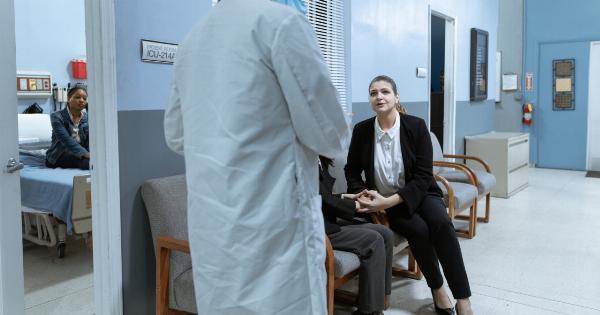Cancer in children is a devastating diagnosis that affects not only the child but also their families.
While advances in medical technology and treatment options have improved the survival rates for pediatric cancer patients, there are still significant challenges that need to be addressed. One such challenge is the risk of infections in hospitals, which can have a major impact on the health and well-being of these vulnerable young patients.
The Vulnerability of Pediatric Cancer Patients
Children with cancer have weakened immune systems due to their illness and the treatments they undergo, such as chemotherapy and radiation therapy. This makes them more susceptible to infections than healthy children.
Hospital settings, where they receive their treatments and care, can be breeding grounds for various pathogens.
The Prevalence of Hospital-acquired Infections in Pediatric Cancer Patients
Hospital-acquired infections, also known as nosocomial infections, are infections that patients acquire during their stay in a healthcare facility.
Studies have shown that pediatric cancer patients are at a higher risk of developing such infections compared to other children. The reasons for this increased susceptibility are multifactorial.
The Impact of Infections on Pediatric Cancer Treatment
Infections in pediatric cancer patients can have severe consequences. They can lead to treatment delays, interruptions, or even discontinuation, which can significantly affect the patient’s chances of successful recovery.
Infections can also prolong hospital stays, increase healthcare costs, and cause substantial emotional distress for both the child and their family.
Common Types of Hospital-acquired Infections in Pediatric Cancer Patients
There are several types of infections that pediatric cancer patients are particularly susceptible to.
These include bloodstream infections, pneumonia, urinary tract infections, surgical site infections, and central line-associated bloodstream infections. Each of these infections can pose serious health risks and may require specific treatment approaches.
Contributing Factors to Infections in Hospitals
Several factors contribute to the increased risk of infections in hospitals caring for pediatric cancer patients.
These include the presence of invasive medical devices such as central venous catheters, compromised immune systems, frequent exposure to healthcare personnel and other patients, inadequate hand hygiene practices, and the presence of drug-resistant bacteria within the hospital environment.
The Importance of Preventative Measures
Preventing infections in pediatric cancer patients is crucial for their overall well-being and treatment success.
Healthcare providers must adhere to strict infection control guidelines, including stringent hand hygiene practices, proper disinfection procedures, and appropriate use of personal protective equipment. Educational initiatives for healthcare personnel and families can also play a significant role in reducing the occurrence of hospital-acquired infections.
The Role of Vaccination in Preventing Infections
Vaccination is an essential preventive measure in reducing the risk of infections in pediatric cancer patients.
Immunization not only protects these vulnerable children from common infectious diseases but also helps to minimize the burden on their compromised immune systems, making them less susceptible to secondary infections.
The Psychological Impact on Pediatric Cancer Patients
The presence of infections in hospitals can have a significant psychological impact on pediatric cancer patients.
These children are already dealing with the emotional and physical challenges of their illness, and the fear of acquiring an infection can further exacerbate their distress. Addressing their psychological well-being and providing emotional support is crucial in their overall care.
Improving Infection Control Measures in Pediatric Oncology Units
Efforts to optimize infection control in pediatric oncology units are essential to mitigate the risk of hospital-acquired infections.
This includes regular surveillance for infections, timely identification and isolation of infected patients, strict adherence to infection prevention protocols, ongoing staff education, and continuous monitoring of infection rates.
Conclusion
Hospital-acquired infections have a significant impact on the treatment and well-being of pediatric cancer patients. Preventing these infections through robust infection control measures, vaccination, and psychological support is of utmost importance.
By addressing this issue, healthcare providers can improve the outcomes and quality of life for children battling cancer.




























